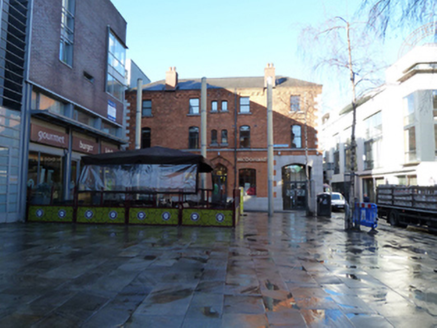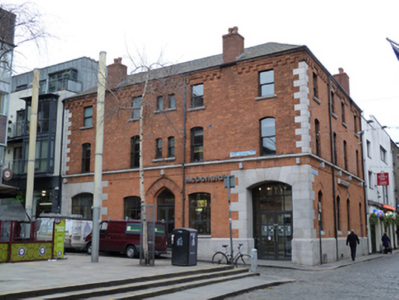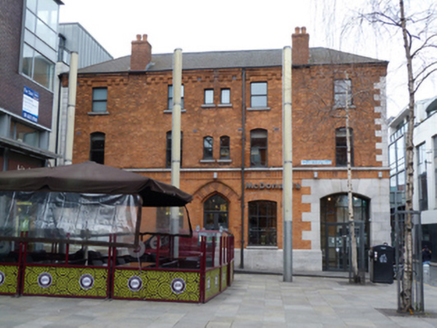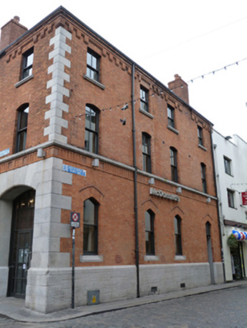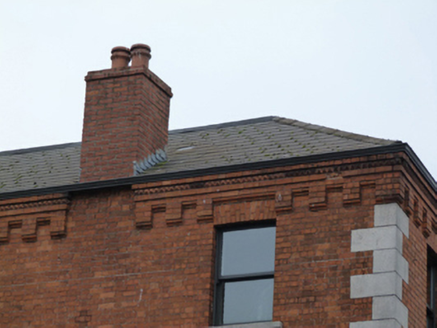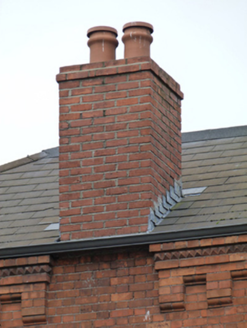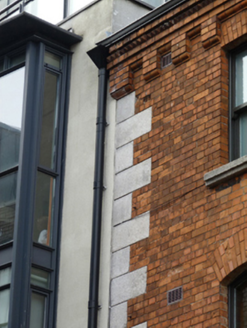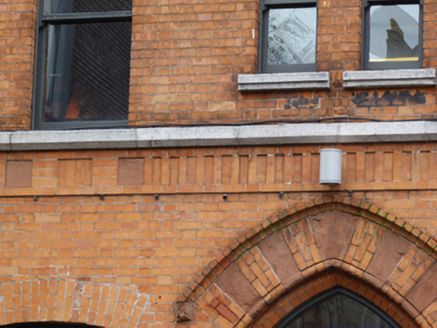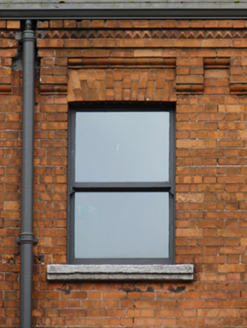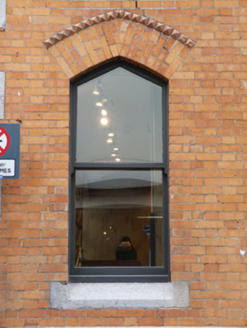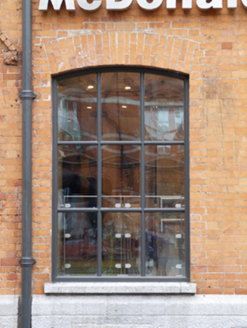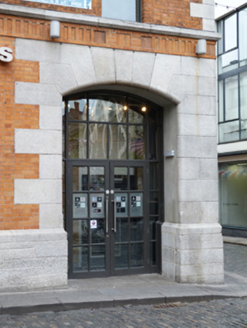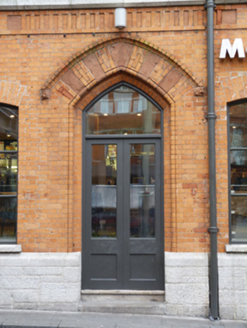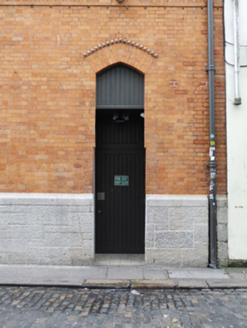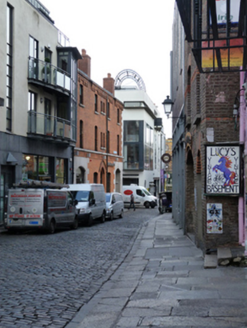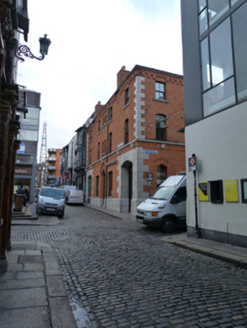Survey Data
Reg No
50020113
Rating
Regional
Categories of Special Interest
Architectural, Artistic, Social
Previous Name
Fownes Street Buildings
Original Use
Shop/retail outlet
In Use As
Restaurant
Date
1870 - 1890
Coordinates
315695, 234184
Date Recorded
17/02/2015
Date Updated
--/--/--
Description
Corner-sited attached five-bay three-storey former commercial building, built c.1880, having four-bay elevation to north. Now in use as restaurant. Hipped slate roof with moulded brick eaves course having nailhead ornament, cast-iron rainwater goods and red brick chimneystacks with clay pots. Red brick laid in Flemish bond with panelled red brick platband, granite quoins and snecked granite plinth course. Square-headed, segmental-headed and pointed arch window openings having one-over-one pane and two-over-two pane timber sliding sash windows. Chamfered granite sills to ground floor, continuous carved granite sill course to first floor and carved granite sills to second floor. Ground floor north elevation openings with terracotta nailhead ornament over. Segmental-headed door openings with bullnosed granite surrounds and replacement doors. Pointed arch door opening having moulded chamfered brick surround, terracotta and moulded brick voussoirs, raised brick hood-moulding with terracotta label stops and replacement door. Pointed arch door opening to north elevation, having recent timber battened door and timber battened tympanum, with terracotta nailhead motif over. Located at junction of Temple Bar and Fownes Street Upper.
Appraisal
Temple Bar is named after Sir William Temple and his son Sir John Temple who acquired land between the River Liffey and Dame Street in the seventeenth century. The area was fully reclaimed and developed by the early eighteenth century and became a mixed residential and commercial area. The construction of the Fownes Street Buildings in the latter decades of the nineteenth century was characteristic of a change in the architectural character of the area at the time, when so-called warehouses, or commercial retail premises, became more prevalent. Commercial directories record that the stores were occupied by W. Hogg, a trader. This large building is prominently sited at the junction of Temple Bar and Fownes Street and is ornamented by red brick, granite and terracotta dressings, which add textural and tonal variation to the façade. It faces east onto a small public space which was created by the removal of a number of buildings on the south side of Temple Bar. Now largely surrounded by buildings of more recent date, it makes a positive contribution to the historic fabric of the area.
